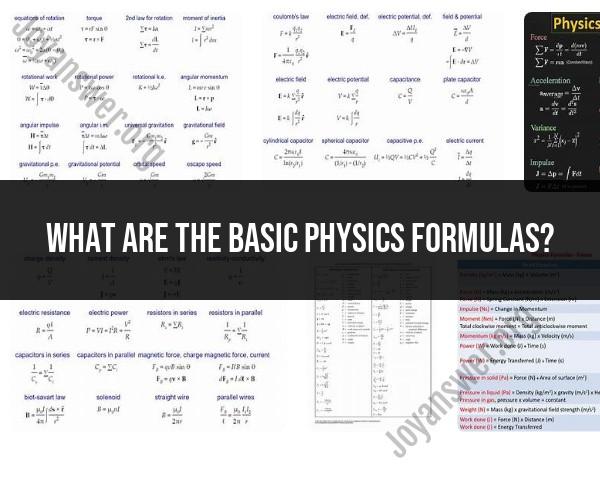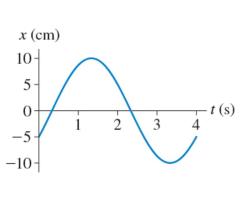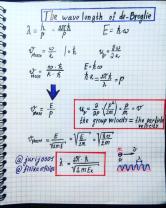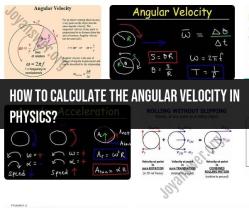What are the basic physics formulas?
Physics is a vast field with a wide range of formulas and equations that describe various physical phenomena. Here are some basic physics formulas that cover fundamental concepts in mechanics, electricity, and thermodynamics:
Mechanics:
Newton's Second Law: F = ma
- F: Force
- m: Mass
- a: Acceleration
Gravitational Force: F = G * (m1 * m2) / r^2
- F: Gravitational force
- G: Gravitational constant
- m1, m2: Masses of two objects
- r: Distance between the centers of the two objects
Kinematic Equations: These equations describe motion under constant acceleration.
- s = ut + (1/2)at^2
- v = u + at
- v^2 = u^2 + 2as
- Here, s represents displacement, u is initial velocity, v is final velocity, a is acceleration, and t is time.
Electricity and Magnetism:
Ohm's Law: V = IR
- V: Voltage
- I: Current
- R: Resistance
Coulomb's Law: F = k * (q1 * q2) / r^2
- F: Electrostatic force
- k: Coulomb's constant
- q1, q2: Charges of two objects
- r: Distance between the charges
Kirchhoff's Laws: These are used to analyze electrical circuits.
- Kirchhoff's Current Law: ΣI_in = ΣI_out
- Kirchhoff's Voltage Law: ΣV_in = ΣV_out
Thermodynamics:
First Law of Thermodynamics (Law of Energy Conservation): ΔU = Q - W
- ΔU: Change in internal energy
- Q: Heat added to the system
- W: Work done by the system
Ideal Gas Law: PV = nRT
- P: Pressure
- V: Volume
- n: Number of moles
- R: Universal gas constant
- T: Absolute temperature (in Kelvin)
Second Law of Thermodynamics: This law states that heat naturally flows from a hot body to a cold one and not in the reverse direction.
These are just a few of the basic physics formulas, and there are many more that cover a wide range of topics in physics, including optics, waves, and nuclear physics. The specific formulas you need to use depend on the particular physics problem or topic you're studying.
Newton's Laws of Motion: What are they and how do they work?
Newton's laws of motion are three physical laws that, together, laid the foundation for classical mechanics. They describe the relationship between a body and the forces acting on it, and its motion in response to those forces.
Newton's first law of motion, also known as the law of inertia, states that an object at rest will remain at rest, and an object in motion will remain in motion at a constant velocity, unless acted upon by an external force.
Newton's second law of motion, also known as the law of acceleration, states that the acceleration of an object is directly proportional to the net force acting on it and inversely proportional to its mass.
Newton's third law of motion, also known as the law of action and reaction, states that for every action, there is an equal and opposite reaction.
Newton's laws of motion have many applications in the real world. For example, they are used to design and build vehicles, airplanes, and other machines. They are also used to understand the motion of planets, stars, and other objects in the universe.
What are the fundamental equations of electromagnetism?
The fundamental equations of electromagnetism are four equations that describe the behavior of electric and magnetic fields. They were developed by James Clerk Maxwell in the 19th century.
The four fundamental equations of electromagnetism are:
- Gauss's law for electricity
- Gauss's law for magnetism
- Ampère's circuital law
- Faraday's law of induction
These equations can be used to describe a wide range of phenomena, including the behavior of electric circuits, the propagation of electromagnetic waves, and the forces between charged particles.
Exploring the equations of kinetic energy and potential energy in physics
Kinetic energy and potential energy are two forms of energy that are important in physics.
Kinetic energy is the energy of motion. It is calculated using the following equation:
KE = 1/2 * m * v^2
where KE is kinetic energy, m is mass, and v is velocity.
Potential energy is the stored energy of an object due to its position or configuration. It is calculated using the following equation:
PE = m * g * h
where PE is potential energy, m is mass, g is acceleration due to gravity, and h is height.
Kinetic energy and potential energy can be converted into each other. For example, when a ball is thrown upward, it has kinetic energy. As it rises, its kinetic energy is converted into potential energy. At the highest point of its trajectory, the ball has all potential energy and no kinetic energy. As the ball falls, its potential energy is converted back into kinetic energy.
The Role of the Universal Gravitational Constant in Physics
The universal gravitational constant is a physical constant that describes the gravitational force between two objects. It is denoted by the letter G.
The universal gravitational constant is calculated using the following equation:
F = G * m1 * m2 / r^2
where F is the gravitational force, m1 and m2 are the masses of the two objects, and r is the distance between the two objects.
The universal gravitational constant is a very important constant in physics. It is used to calculate the gravitational force between planets, stars, and other objects in the universe.
How to calculate velocity, acceleration, and distance using basic physics formulas?
Velocity, acceleration, and distance are three important concepts in physics. They can be calculated using the following basic formulas:
- Velocity: v = d / t
- Acceleration: a = (v2 - v1) / t
- Distance: d = v * t
where v is velocity, a is acceleration, t is time, and d is distance.
For example, to calculate the velocity of a car, you would divide the distance traveled by the time it took to travel that distance. To calculate the acceleration of a car, you would divide the change in velocity by the time it took to change velocity. And to calculate the distance traveled by a car, you would multiply the velocity by the time.
These are just a few of the many important concepts and formulas in physics. By understanding these basics, you can begin to explore the world of physics and learn more about how the universe works.













